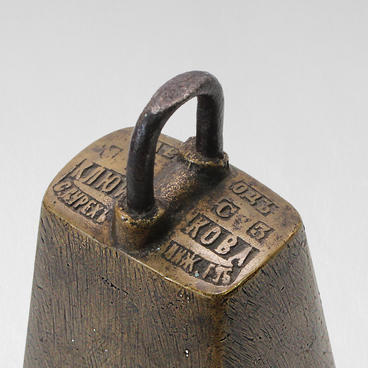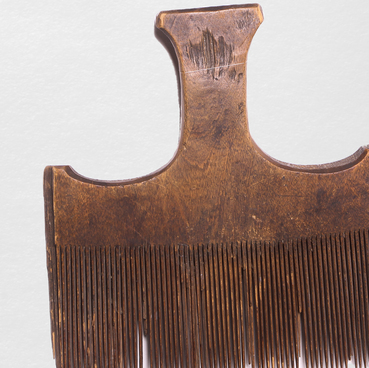Mariinsk history is connected with the construction of the Moscow-Siberian highway, the longest overland trade route in the 19th century from the European part of Russia to the borders of China and Mongolia. Goods popular in Central Russia came to the city together with people who traveled along the Siberian route through Kiisk (as Mariinsk was formerly called). For example, a can of fruit drops from the ‘Einem’ Moscow factory (modern ‘Red October’ [‘Krasny Oktyabr’]), displayed at the exhibition. It is decorated with colorful patterns typical for confectionery packaging of the late 19th — early 20th centuries.
The entrepreneur Theodor Ferdinand von Einem opened his workshop for the production of chocolates in 1849, and the partnership of the steam factory of chocolates and tea cookies ‘Einem’ was founded in 1867. The factory produced caramel, sweets, chocolate, cocoa drinks, marshmallows, cookies, gingerbread, biscuits. After opening factory branches in Crimea, ‘Einem’ began to produce chocolate-dipped fruits: plums, cherries, pears, as well as marmalade. Thanks to the high quality of products, colorful packaging, and advertising, Einem’s factory quickly became one of the leading confectionery production plants of the late 19th century.
During this period, the Russian confectionery industry was actively developing. Many companies produced chocolates, sweets, caramel, candies, including aromatic drops with spices or fruit essences. Among them were “Einem” Partnership, “Alexey Abrikosov”s Sons Factory and Trade Partnership” (“Babayevsky”), “The Lenovs Trading House” (“Rot Front”), “Adolph Siu and Co” (“Bolshevik”) partnership, and many more.
Manufacturers of sweets paid great attention not only to the quality of the products but also to the strength and design of the packaging. In the 1880s, tin became a popular material, and metallochromic technology — electroplating — was first used to create decor. Electroplating technology was used to make the packaging look like more expensive materials: silver, gold, nickel, and others. This allowed the factory craftsmen to create real works of art from the packaging.
The entrepreneur Theodor Ferdinand von Einem opened his workshop for the production of chocolates in 1849, and the partnership of the steam factory of chocolates and tea cookies ‘Einem’ was founded in 1867. The factory produced caramel, sweets, chocolate, cocoa drinks, marshmallows, cookies, gingerbread, biscuits. After opening factory branches in Crimea, ‘Einem’ began to produce chocolate-dipped fruits: plums, cherries, pears, as well as marmalade. Thanks to the high quality of products, colorful packaging, and advertising, Einem’s factory quickly became one of the leading confectionery production plants of the late 19th century.
During this period, the Russian confectionery industry was actively developing. Many companies produced chocolates, sweets, caramel, candies, including aromatic drops with spices or fruit essences. Among them were “Einem” Partnership, “Alexey Abrikosov”s Sons Factory and Trade Partnership” (“Babayevsky”), “The Lenovs Trading House” (“Rot Front”), “Adolph Siu and Co” (“Bolshevik”) partnership, and many more.
Manufacturers of sweets paid great attention not only to the quality of the products but also to the strength and design of the packaging. In the 1880s, tin became a popular material, and metallochromic technology — electroplating — was first used to create decor. Electroplating technology was used to make the packaging look like more expensive materials: silver, gold, nickel, and others. This allowed the factory craftsmen to create real works of art from the packaging.
Many buyers did not throw away the elegantly made tin cans but used them as cases for household items: threads, needles, buttons, and so on. A considerable number of such cans have survived to this day, and are in good condition.



